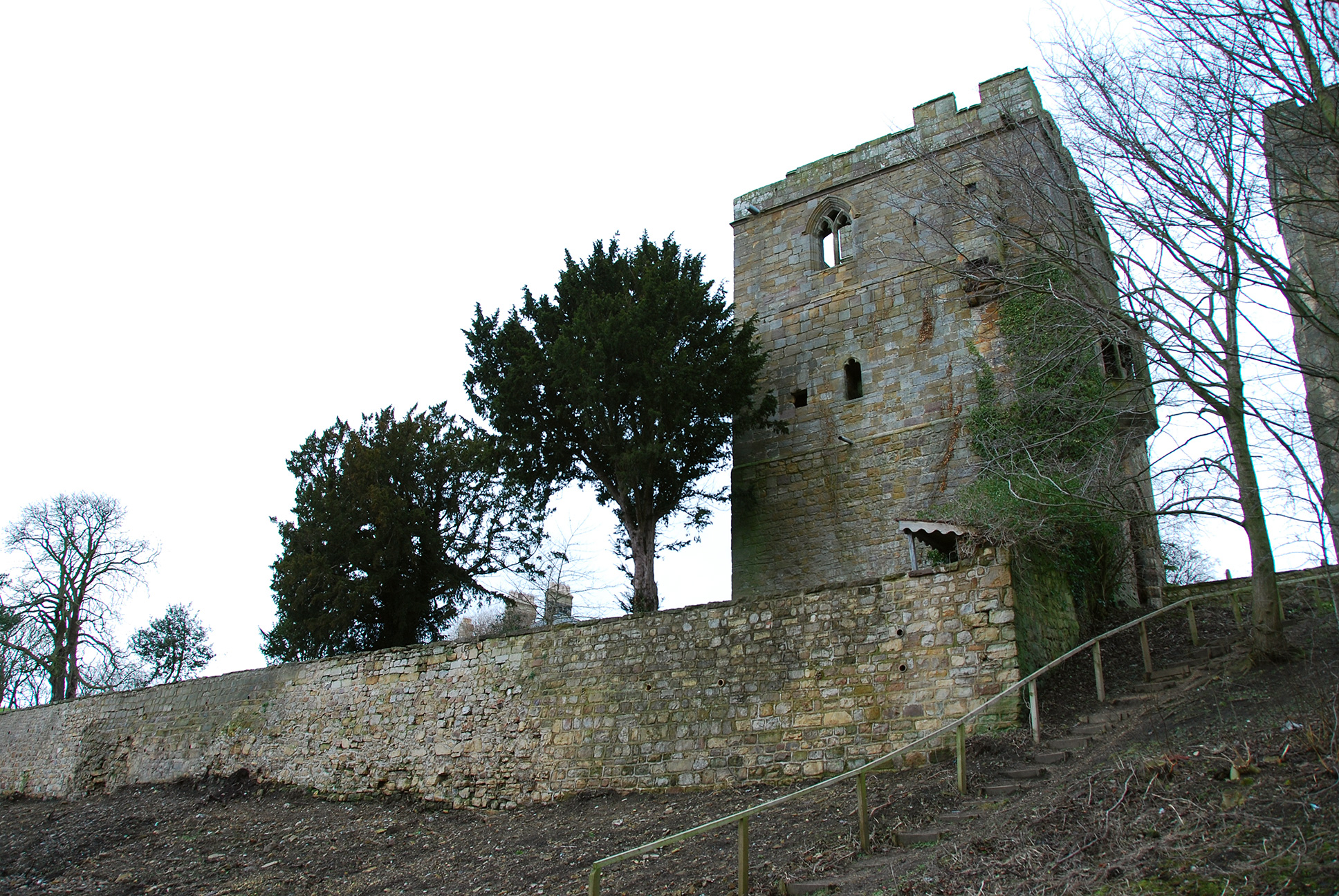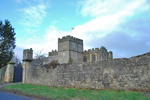History
Marmion Tower was the gatehouse of the now otherwise demolished Tanfield Castle, a fortified manor house of the knight John Marmion. The tower was named after the Marmion family, who owned the manor, constructed between 1350 and 1400.

A royal license to crenelate was granted in 1314 to John Marmion. It was remodeled several times, with the current structure dating back to the 15th century, when it was in possession of the FitzHugh family. The upper rooms served as domestic chambers, while the ground floor room served as a guardroom. After the death of William FitzHugh, 4th Baron FitzHugh, in 1513, the manor passed to the Parr family. William Parr was the brother of Catherine Parr, the sixth and last wife of Henry VIII. William was the Marquess of Northampton.
In the 1530s, John Leland described the impressive gatehouse tower, which formed the principal entrance to the now-vanished manor house, as possessing "a fair tourid gate and a haule of squarid stone." It was battlemented in the fashion of a castle but not provided with a portcullis or arrow loops.
Marmion Tower was placed in state guardianship in 1976 and is in the care of English Heritage.
Castle Highlights
Marmion Tower resides in North Yorkshire, England, on the banks of the River Ure. Only the gatehouse tower remains, as the manor house has long since vanished. The east front of the building includes a decorative oriel window, in addition to various rooms on the ground floor and stairs for ascending to the first floor. A garderobe, which empties over the River Ure, can be seen projecting from the top floor.
It is worth a visit if you are traveling to nearby Middleham Castle. Impressive views of Marmion Tower may be attained by walking along the riverside and bridge crossing the River Ure. However, I only recommend part of the day to visit the tower. An hour should provide more than ample time to explore this historical artifact.



